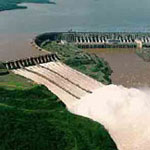An electricity shortage looms in Chile this year as a result of drought conditions and the reduced volume of natural gas imports from Argentina. Local markets are pinning their hopes on the hydroelectricity projects that Endesa Chile will launch in Chile’s Patagonian region, which aim to provide 15% of the country’s electricity supply. The problem is that the project needs water resources that are part of the country’s cultural and natural heritage. The economic impact of building five hydroelectric plans, along with the high voltage electricity they generate, have triggered a debate about the country’s real priority: Should Chile focus on overcoming the current shortage or on preserving its ecosystem?

Sign up to stay informed about our latest article releases.